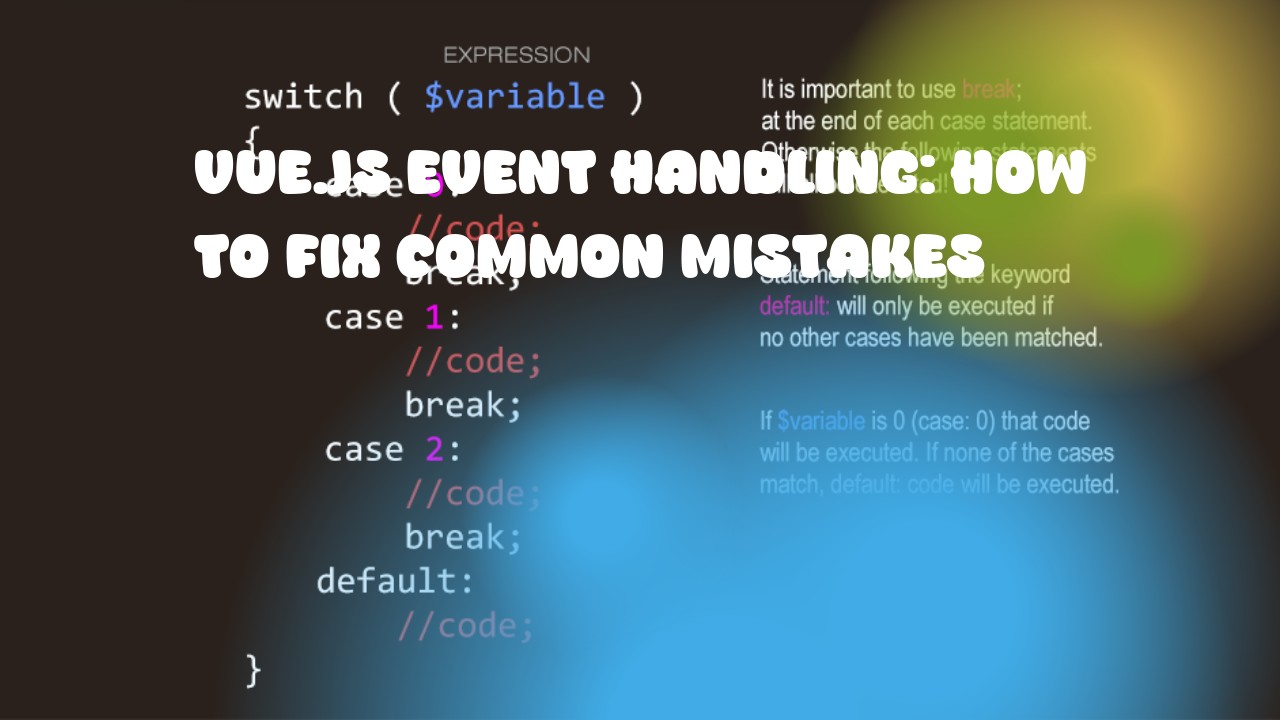In Vue.js, event handling is an essential aspect of building interactive applications. However, it's easy to fall into common mistakes when dealing with events. Here are some tips on how to handle them correctly:
- Use
v-onor@to bind event handlers: The preferred way of binding event handlers in Vue.js is by using thev-ondirective (@) or its shorter form. Avoid using native JavaScript event listeners likeaddEventListener().
Example:
<template>
<button v-on:click="handleClick">Click Me</button>
</template>
<script>
export default {
methods: {
handleClick(event) {
console.log('Button clicked');
}
}
}
</script>
- Avoid using arrow functions for event handlers: Arrow functions do not have their own
this, so they will inherit the value ofthisfrom their parent scope, which can cause unexpected behavior when dealing with Vue.js events. Instead, use regular function expressions.
Example:
<template>
<button @click="handleClick">Click Me</button>
</template>
<script>
export default {
methods: {
handleClick(event) {
console.log('Button clicked');
}
}
}
</script>
- Use
event.stopPropagation()orevent.preventDefault()appropriately: If you want to stop event propagation or prevent the default behavior of an event, make sure to use the correct methods.
Example:
<template>
<div @click="handleParentClick">
<button @click.stop="handleChildClick">Click Me</button>
</div>
</template>
<script>
export default {
methods: {
handleParentClick(event) {
console.log('Parent clicked');
},
handleChildClick(event) {
event.stopPropagation(); // Prevent event propagation to the parent div
console.log('Child clicked');
}
}
}
</script>
By following these tips, you can prevent common mistakes when handling events in Vue.js and build more robust and reliable applications.

